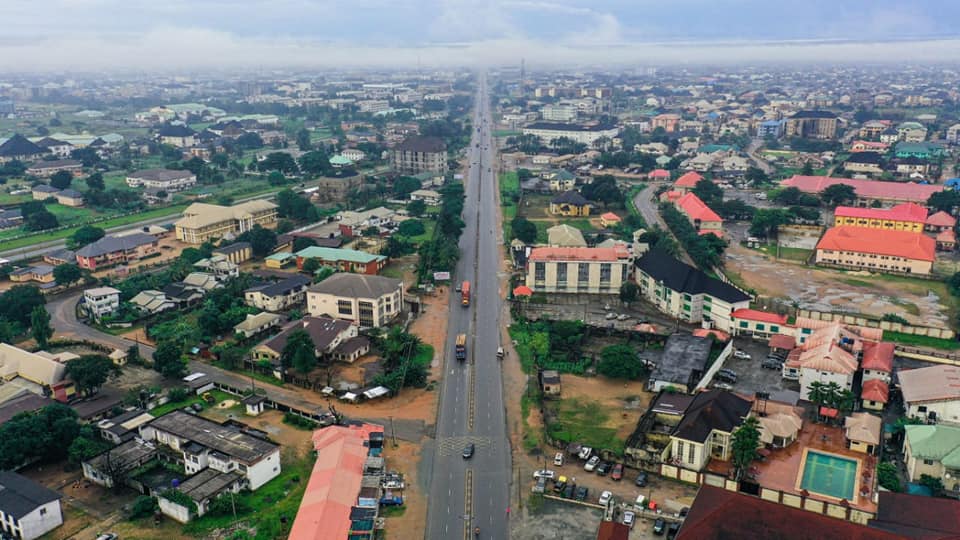
In the complex and dynamic field of energy, especially in offshore and remote environments, technology plays a pivotal role in advancing safety, security, and operational efficiency.
Dr. John Aondoaseer Jia, a leading expert in Occupational Health and Safety with over 25 years of experience in the energy sector, has been pioneering and advocating for innovative approaches to risk management through the application of AI, unmanned vehicles, and machine learning. His expertise is particularly focused on high-risk areas, including the Niger Delta, where oil theft and environmental degradation have posed significant challenges to the oil and gas industry.
With a specialisation in risk management and loss prevention, Dr. Jia’s work has sought to integrate cutting-edge technologies to enhance safety and efficiency in the industry, with a focus on subsea operations and remote environments. He envisions a future where AI-driven systems, coupled with unmanned vehicles and machine learning, not only improve surveillance and detection but also revolutionize how risks are managed, especially in offshore and subsea environments.
Future-Focused Research: Subsea Data Collection and AI-Driven Risk Management
As the oil and gas industry continues to expand into deeper and more remote waters, managing risks in subsea environments is becoming a critical priority. Currently, much of the subsea data required to fully understand and mitigate risks has not yet been collected or integrated into risk management systems. Dr. Jia advocates for future research aimed at obtaining real-time subsea data that can be fed into AI algorithms, enabling predictive analysis and the development of comprehensive risk management strategies.
By leveraging the capabilities of unmanned underwater vehicles (UUVs) and advanced sensors, the oil and gas industry can gather essential data from previously inaccessible subsea regions. These technologies can monitor critical factors such as pressure changes, temperature fluctuations, and equipment integrity, providing crucial insights into potential risks before they escalate into serious incidents.
The integration of this subsea data into AI and machine learning models will allow for the creation of highly accurate, predictive risk management systems. These systems will not only detect anomalies in real time but also provide strategies for health, safety, and environmental protection that are specifically tailored to the unique conditions of offshore and subsea operations.
The Challenge: Oil Theft and Hazardous Environments
In addition to subsea operations, Dr. Jia’s work is highly focused on combating oil theft in the Niger Delta, where illegal refining activities and unauthorized pipeline tapping have led to significant economic losses and environmental harm. Beyond the financial impact, these illicit activities often occur in hostile environments, exposing responders to armed criminals, toxic substances, and physical hazards. Traditional methods of response, which involve sending personnel into these dangerous areas, have proven to be both inadequate and harmful.
Recognizing the need for a safer and more effective approach, Dr. Jia has been an advocate for utilizing drones and unmanned vehicles equipped with AI and machine learning to conduct real-time monitoring, detection, and rapid response. His goal is to significantly reduce the risk to human life while improving operational efficiency in these high-risk environments.
Advanced Technologies: AI, Unmanned Vehicles and Machine Learning
Dr. Jia’s approach involves using a combination of AI-driven unmanned vehicles and machine learning algorithms to monitor, detect, and respond to risks in offshore and remote locations. These technologies offer several key advantages in managing risks in both subsea and surface environments:
1. Real-Time Subsea Monitoring: Unmanned underwater vehicles (UUVs) equipped with high-resolution cameras and advanced sensors can provide continuous real-time monitoring of subsea infrastructure such as pipelines, wellheads, and production equipment. This allows operators to identify potential risks such as leaks, equipment failure, and environmental changes that may not be visible from the surface. The collected data can be integrated into AI systems to predict potential failures and optimize response strategies.
2. AI and Machine Learning for Predictive Risk Management: By integrating AI with subsea data, machine learning algorithms can analyze historical and real-time data to identify patterns and predict potential risks in advance. For example, subtle changes in subsea pressure or temperature may indicate an impending equipment failure, allowing operators to take preventive action before a more serious incident occurs. AI-driven systems can also provide risk management strategies for specific environmental conditions, such as those found in deepwater or remote locations.
3. Mitigating Risks in Hostile Environments: Unmanned vehicles can also be deployed in hostile environments, such as oil theft hotspots in the Niger Delta. These drones can monitor pipelines, illegal refining sites, and production facilities from a safe distance, capturing real-time data and identifying unauthorized activities. The AI systems then analyze the data, allowing for rapid responses without putting human lives at risk.
4. Subsea Data and Environmental Protection: Gathering comprehensive subsea data also plays a critical role in environmental protection. By understanding the environmental impact of oil and gas activities in real-time, AI algorithms can be designed to predict and mitigate potential hazards, such as oil spills or ecosystem disruption, before they cause significant damage. This not only ensures regulatory compliance but also enhances the industry’s overall commitment to sustainable practices.
5. Combating Oil Theft with Technology: The use of AI and drones in combating oil theft is one of the most significant applications of Dr. Jia’s research. By utilising thermal imaging, pattern recognition, and automated alerts, drones can detect illegal activities even in low-visibility conditions, such as dense vegetation or nighttime. The drones can be programmed to send automated alerts to security personnel, enabling rapid intervention without the need for human responders to be on-site.
Safety and Cost Efficiency: The Future of Operations
One of the key advantages of integrating AI, unmanned vehicles, and machine learning into subsea and offshore operations is the enhanced safety for personnel. By reducing the need for human involvement in dangerous environments, companies can minimize the risk of injury, exposure to toxic substances, and security threats.
Additionally, this approach offers cost efficiency by reducing operational costs associated with manual inspections and repairs. For instance, early detection of equipment failure or pipeline leaks can prevent costly shutdowns and extensive repairs, while the use of drones can eliminate the need for large security teams on the ground.
Implementation Strategy: Building a Technological Infrastructure
To fully realise the potential of AI and unmanned vehicles in managing risks offshore and subsea, Dr. Jia advocates for the development of a comprehensive technological infrastructure that includes:
1. Drone Fleets and UUVs: Establishing a fleet of drones and unmanned underwater vehicles equipped with advanced sensors and AI capabilities for comprehensive coverage of oil infrastructure, both onshore and offshore.
2. Data Integration and AI Systems: Building centralized control centers where subsea and surface data is integrated, analyzed, and used to develop risk management strategies. This data can also be used to inform decision-making in real-time, enhancing operational efficiency and safety.
3. Collaboration and Training: Developing training programs for security personnel, engineers, and emergency responders on how to operate drones, analyze data, and use AI systems effectively. Collaboration with local communities, security agencies, and industry stakeholders will also be essential to the successful deployment of these technologies.
Conclusion: Shaping the Future of Risk Management
Dr. John Aondoaseer Jia advocates and leading research work in integrating AI, unmanned vehicles, and machine learning into the oil and gas industry will pave the way for a safer, more efficient, and technologically advanced future. The research into subsea data collection and AI-driven risk management strategies will have a transformative impact on both offshore operations and environmental protection, ensuring that the industry remains at the forefront of innovation and sustainability.
By embracing these cutting-edge technologies, the oil and gas sector can not only combat oil theft and manage risks more effectively but also protect the environment and ensure the safety of its workforce for years to come. Dr. Jia’s vision for the future of risk management and loss prevention promises to drive significant progress in the application of technology to some of the industry’s most pressing challenges.






